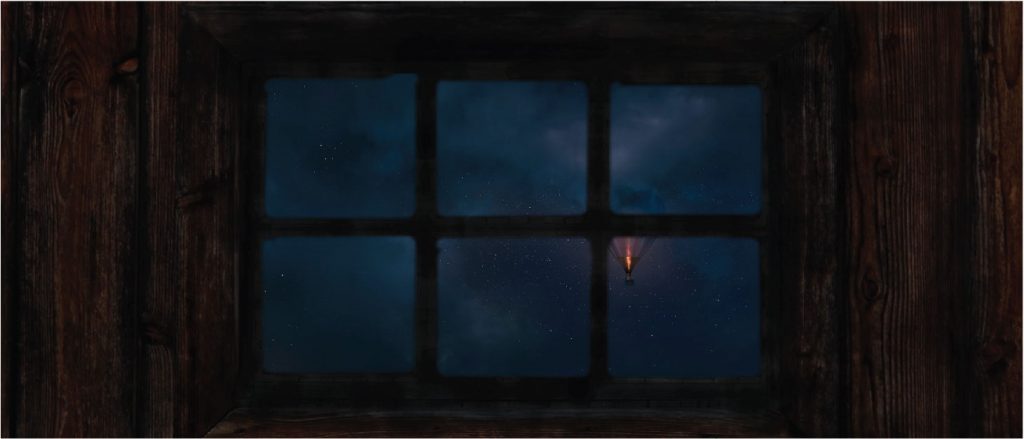
Enticed by stories of people who were flipping houses and making piles of money, I bought a run-down house on Montrose Avenue in spring 2006. An architect, I would remodel. The value would jump, resale would be quick, and I would move on to another real estate speculation.
The house had one story and a large yard with a chain link fence. Coated in lumpy stucco with peeling white paint, it was built around 1915, with changes and additions over the years, not always for the better. A surly black cat lived under the porch.
I measured, drew a plan of the existing house, and exercised my pencil. The hot water tank in the dining room had to go. A small bedroom tacked on the rear became a new bath, creating a master suite. The spindly posts on the front porch swelled as Tuscan columns. The stucco box changed to a neoclassical gem.
Construction took two months. I listed the house for sale with a realtor named Pat. Summer matured into fall, fall cooled into winter, and I received no offers.
“Winter is a slow time for real estate,” Pat said. “Come spring, buyers will flock to your door.”
By May of 2007, one offer had come in, a low ball. The interest payments were killing me.
“The tide is about to turn,” Pat said.
A friend listened patiently to my tale of woe and said: “Why don’t you rent it out?” I researched rents in the area and placed an ad.
A young doctor and his schoolteacher wife were visiting town. Gabe was about to start a residency at the local hospital. They loved my cottage. Gabe clocked his bicycle commute at ten minutes. Sarah found a job at an elementary school. I went to a business supply store, bought a printed lease which covered every possible event including acts of war, and we met at my office. They signed and gave me a security deposit.
In one stroke, I became an accidental landlord. The Great Recession spawned quite a few of us. Some were desperate, head over heels in debt and unemployed. Some overdid the home improvements. And some were would-be flippers, like me. We all faced a learning curve in property management.
My first lesson arrived the day Gabe and Sarah moved in.
“There’s water on the kitchen floor,” she said by phone. “The refrigerator has a leak.”
On inspection, it turned out that Gabe’s water bottle in the refrigerator had tipped over. From this I learned: all that’s needed to fix some problems is a slight delay.
Over the next three years, Gabe cut the grass, while Sarah did a credible job of decorating on a shoestring. Except for that first false alarm, their requests were fair. A tub drain was clogged with what turned out to be marbles. A toilet tank float stopped floating. The water at some taps had a disagreeable smell. The smell came from galvanized supply pipe in the crawl space that was rusty and had to be replaced. From these encounters I learned: a landlord should forge a close, personal relationship with a plumber.
One winter, Sarah said: “There are noises in the walls, like chirping or rustling. The noises travel, or maybe they come from overhead. It’s been going on for months. Do you think the house is haunted?”
I visited and heard nothing. Later, as Gabe stared at the front of the house, he saw a squirrel exit the eave. A hole in the fascia had been hidden by the gutter, which was now sagging from the weight of snow and ice. I called an exterminator, who placed a trap on the roof. The trap caught the squirrel. Next, a handyman took off the gutter and fascia board, which was too rotten to plug. He cut a new board to fit, and rehung the gutter. It was a labor-intensive operation that left no visible trace. The noises ceased.
Gabe completed his residency and got a job in Charleston, South Carolina. Sarah was excited to move to a historic city. I was sorry to see them go. Still, three years of everyday living had a negative effect on the off-white carpet. Lesson: carpet should be the color of dirt.
The second tenant was another young couple, a dermatologist and her engineer husband. In the course of a year, they had their first child. The antique charm of the place was lost on them. They bought a new house elsewhere in town. They never complained, though, and when they left, the house and yard were immaculate.
The third tenant was another pair of newlyweds. Matt and Amy were high school teachers of mathematics and social studies, respectively. Instead of a bicycle or a recycling bin stuffed to overflowing, they furnished the front porch with a glass-top café table and chairs. It never looked so stylish. Matt cut the grass and brewed beer as a hobby. Amy noticed some scratching and gnawing noises under the floor. The black cat had disappeared long ago. We were dealing with another rodent problem.
“Rats in the crawl space?” said my friend. “You really are a slumlord!”
The exterminator set a box with poisoned bait in the crawl space. “They eat the poison,” he said, “which makes them thirsty. So they roam outside looking for water, and that’s where they die. No muss, no fuss. Wait a week, then plug the holes where the rats get in.”
The handyman returned to install metal mesh at a gap in the foundation. “Rat wire,” he said. “That’s what it’s called.”
Seven years on, after all my repairs, the plumbing was in working order. The city installed a sidewalk and paved the off-street parking space at no charge, through a community development block grant. The rent rose along with market demand. The steady flow of income smoothed the ups and downs of self-employment. For the accidental landlord, the learning curve was leveling out.
A
Accidental Landlord

CategoriesCulture




